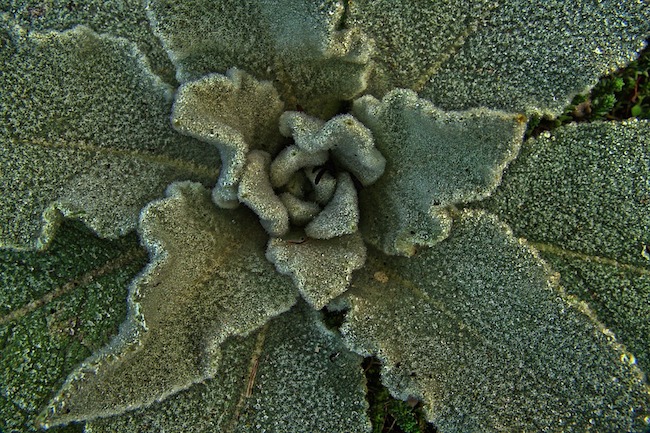The Heal-Everything Herb That Doubles As Bandages … And Toilet Pape by: Erin Goodin for Off The Grid News
It was brought to the Americas by European settlers and is now considered to be naturalized to North America. The settlers, in fact, had good reason to carry it with them: It has a long list of medicinal qualities.
It is mullein, which grows all over the forests of North America and is also known by several other names: flannel leaf, bunny ears, beggar’s blanket, Quaker rouge, hag’s taper, donkey ears and tinder plant.
Traditional folk medicine praised mullein as a remedy for asthma, bronchitis and tuberculosis. The plant is also said to be a natural painkiller and a cure for earaches and headaches. It also can act as an expectorant and decongestant. As a result, for centuries the plant’s leaves and its flowers have been made into teas and tinctures, and ingested. They even smoked it (which isn’t ideal for health).
Mullein is known to affect the respiratory and lymphatic systems. A study performed at Clemson University in 2002 found that the plant also has strong antibacterial properties.[1] Its high mucilage content is likely responsible for its medicinal properties. Astringent tannins and saponins, which help protect the plant when it is injured in nature, give the plant its soothing effect on the respiratory system. It also contains high levels of iron, magnesium, potassium and vitamin C.[2]
Even though mullein has been used for centuries, the Western medical community disputes the actual effectiveness of this plant, claiming “a lack of therapeutic validation.”[3]However, the herb has been evaluated and approved by the German (and government-funded) Commission E, which was established to evaluate and approve of substances that were traditionally used in folk medicine — such as mullein.
Mullein is a biennial plant, meaning that it takes two years for it to reach maturity. It is preferable to harvest the flowers and leaves in the plant’s second year of growth.[4] Both the honey-scented flowers of the plant and its soft, fuzzy leaves are used to treat ailments. The flowers are usually extracted in oil and also used to make tea, while, the dried leaves are typically reserved for making steam tents, poultice application and smoking. [5]
Across the centuries, people have used mullein as toilet paper, bandages, torches and to pad in the soles of their shoes. It should be a staple herb in every herbal medicine cabinet.
Mullein is a relatively safe herb to consume, its primary side-effect being it can cause contact dermatitis or irritate the throat when consumed, due to the fine velvety hairs that cover its leaves. It also has been known to interact with antidiabetic drugs and prescription diuretics in a negative way.[6] The seeds of some species of mullein contain high amounts of coumarin and rotenone, which can be toxic if consumed in large quantities. The seeds of the mullein plant should never be consumed under any circumstance.[7]
Continue Reading / Off The Grid News >>>




